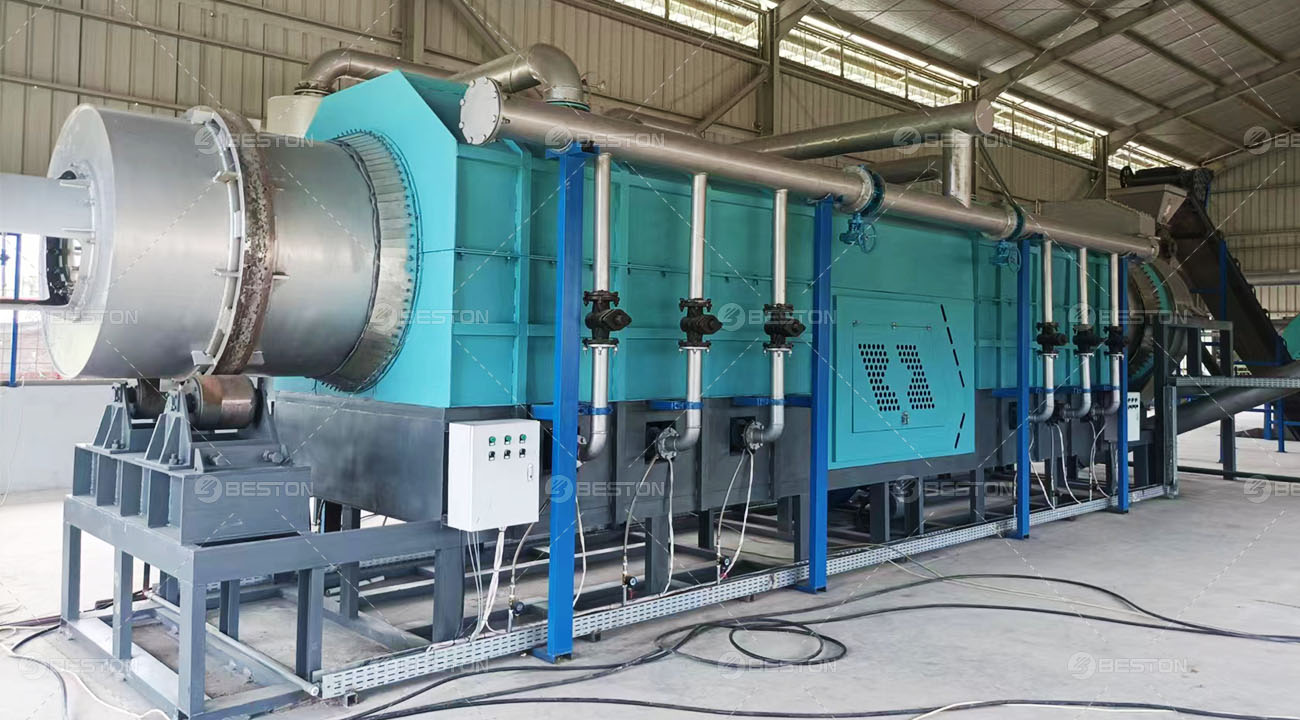In the intricate dance of industrial processes, wood processing emerges as a vital player, generating a significant volume of waste. However, the alchemy of transformation unfolds when we delve into the realm of charcoal production from this wood processing waste. In this exploration, we uncover the intricacies and advantages of this process, shedding light on its environmental, economic, and technological dimensions.
The Pinnacle of Efficiency:
At the core of the advantages lies the concept of efficiency. The utilization of a cutting-edge technology known as the wood to charcoal machine propels the process to new heights. This sophisticated machinery orchestrates the conversion of wood waste into charcoal with meticulous precision, maximizing resource utilization.
Resource Optimization:
One of the foremost advantages lies in the ability to optimize resources. The wood to charcoal machine ensures that every fiber of wood undergoes a purposeful transformation, leaving minimal waste behind. This resource-conscious approach aligns seamlessly with the principles of sustainability, mitigating the environmental impact of wood processing activities.
Economic Viability:
In the economic landscape, the conversion of wood waste to charcoal proves to be a financially sound venture. The efficiency gains achieved through the wood to charcoal machine translate into cost savings, making it an attractive proposition for industries seeking both profitability and environmental responsibility.
Carbon Footprint Reduction:
Charcoal production from wood processing waste contributes significantly to carbon footprint reduction. The traditional disposal methods of wood waste, such as burning or landfilling, release substantial carbon emissions. The conversion process not only prevents these emissions but also transforms the wood into a stable carbon form, promoting a net reduction in atmospheric carbon levels.
Energy Independence:
The charcoal produced from wood waste serves as a valuable energy resource. Industries can harness this energy for various purposes, reducing dependency on traditional fossil fuels. The wood to charcoal machine thus plays a pivotal role in fostering energy independence and diversifying the energy portfolio of industrial operations.

Biochar for Soil Enrichment:
Beyond traditional charcoal, the process yields a byproduct known as biochar. This carbon-rich substance finds its place in agriculture as a soil enhancer. The incorporation of biochar improves soil structure, enhances nutrient retention, and promotes microbial activity. The symbiotic relationship between wood waste, charcoal, and biochar exemplifies a circular approach to resource utilization.
Mitigating Deforestation Pressures:
Charcoal production from wood processing waste contributes to the alleviation of deforestation pressures. By deriving value from wood waste, the demand for fresh timber decreases. This, in turn, helps in preserving forests, fostering biodiversity, and maintaining the delicate ecological balance.
Technological Advancements:
The advent of the sawdust charcoal machine represents a leap forward in technological prowess. This innovative equipment integrates automation, precise temperature control, and sustainable practices. Its role in the conversion process underscores the importance of technological advancements in driving environmental stewardship.
Waste Valorization:
Wood processing waste, often viewed as a burden, transforms into a valuable resource through charcoal production. This waste valorization not only minimizes the environmental impact but also demonstrates the potential inherent in seemingly discarded materials. The wood to charcoal machine serves as a catalyst in this paradigm shift towards recognizing the worth of every wood fiber.
Carbon Sequestration Potential:
Charcoal, being a stable form of carbon, has the potential for long-term carbon sequestration. When applied to soil or integrated into other products, charcoal can lock away carbon, contributing to efforts aimed at mitigating climate change. The dual role of charcoal—energy resource and carbon sink—adds a layer of complexity to its advantages.
Conclusion: A Symphony of Innovation and Sustainability
In conclusion, the advantages of charcoal production from wood processing waste extend far beyond the surface of waste reduction. The orchestration of this process through the wood to charcoal machine exemplifies a harmonious blend of innovation and sustainability. From economic gains to environmental stewardship, from resource optimization to technological prowess, each facet contributes to a symphony of positive outcomes.
As industries navigate the evolving landscape of responsible practices, charcoal production stands as a beacon of possibility—a testament to the transformative power of technology when harnessed for the betterment of both business and the planet.

Comments
No comments yet. Be the first to react!